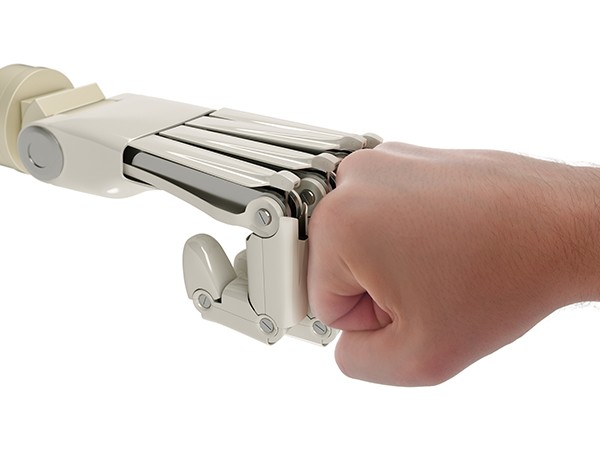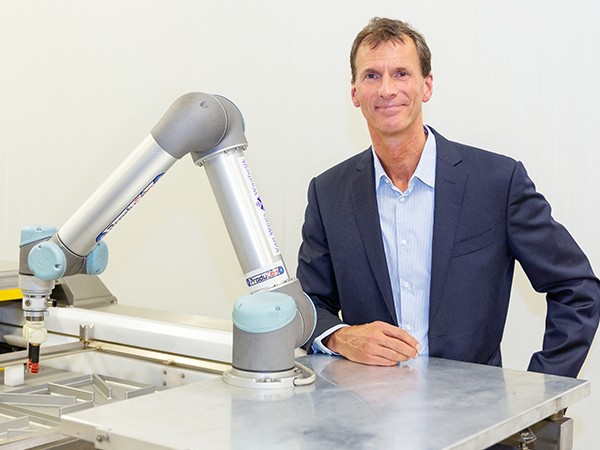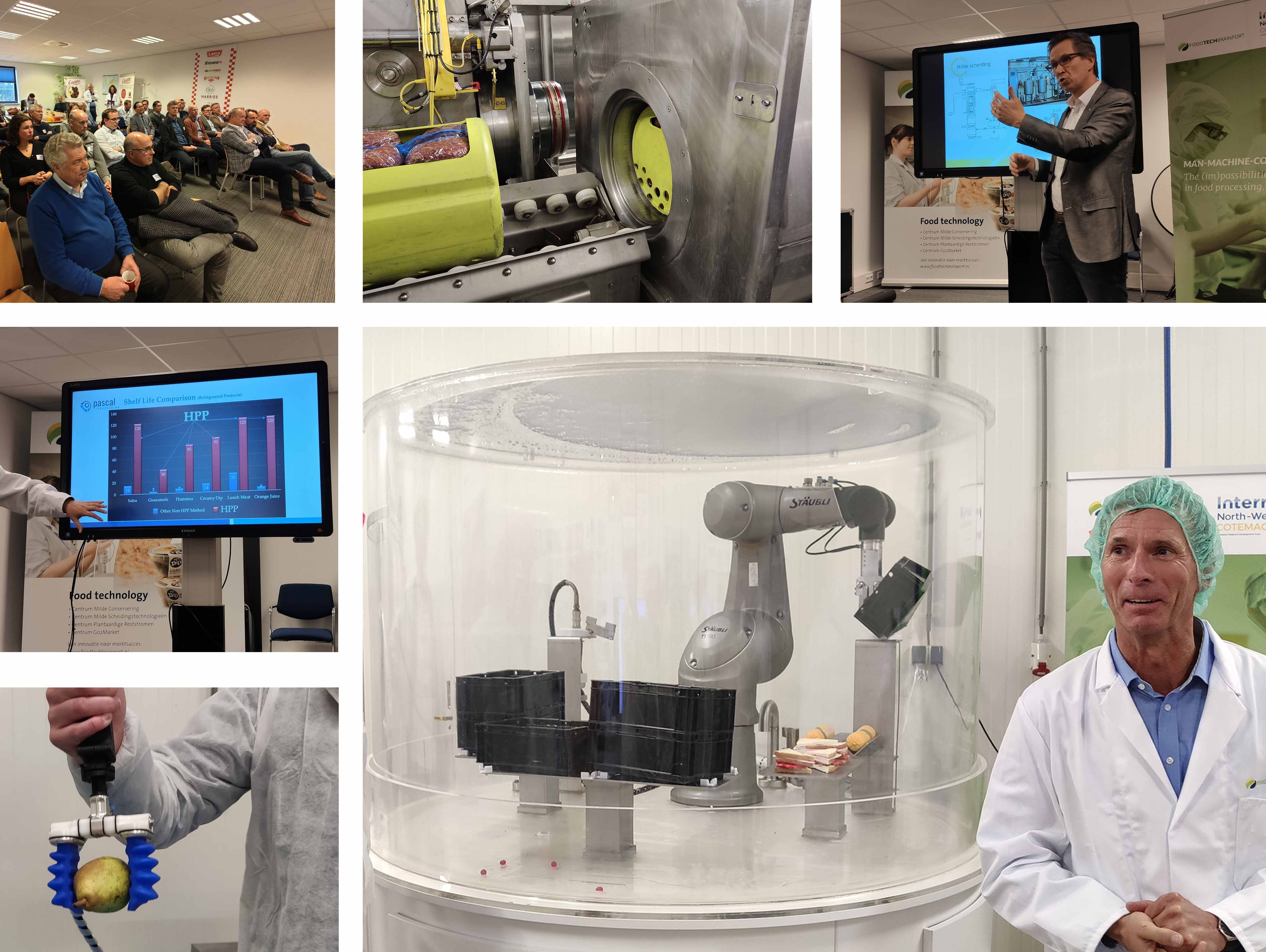
They do not have a cobot catalogue to choose from, but they can work with you to determine whether a cobot can improve your business processes. Is cobotisation still a distant reality? John de Groot likes to bring it all a little closer.
'Man-Machine-Collaboration. Get to know the possibilities and impossibilities of collaborative robots in the food processing industry free of charge'. For example, it can be found on the front page of the COTEMACO brochure. John de Groot takes care of business at the organisation and devotes his time to answering all our questions. COTEMACO stands for Increased 'Competitiveness Through Efficient Man & Machine Collaboration'. "It is an Interreg NWE programme with two partners in the Netherlands: Food Tech Brainport and High Tech NL," explains John. "Food Tech Brainport is a foundation that wants to bring innovations to the food sector: from a better recipe and different pasteurisation to more efficient production. High Tech NL is the sector association for technology companies. In addition to funding from Europe via Interreg NWE, we also have funding from the province of Noord-Brabant."
"COTEMACO is a supporting programme. So we are not primarily engaged in R&D, although we can offer support outside the initiative. At COTEMACO, we want to introduce the food industry to cobots and guide them free of charge towards their implementation."
"A robot does not take any person in his surroundings into account. A cobot (collaborative robot, ed.) does. It has sensors to detect people, so they can't get hurt."
"A cobot can take over boring monotonous work. Meal salads such as those found in supermarkets are put together by people on a conveyor belt. Adding a tomato, sauce-sachet or onion rings could also be done by a cobot. And when it's ready, the cobot can put red peppers on the package. The ideal cobot is flexible and can be used in several places, next to and among people."

John de Groot
"It starts with informing, arousing interest. The first 'awareness-round' takes place in the field lab Smart Food Processing in Helmond, where there are nine setups that give an idea of what you can and cannot do with cobots. A cobot that cuts cakes, for example. But perhaps this technology is also suitable for slicing meat products. We want to inform and inspire people."
"We will support entrepreneurs who want to explore the possibilities further afterwards. Of course this is about cobot technology, but also about creating support within the organisation, determining the economic and technical feasibility and what else you can do with the data you collect. These are all important points of attention."
"That's the way you might say it. We inform, inspire and guide towards the implementation. Because we cannot physically show everything in our field lab Smart Food Processing, we use virtual reality and a digital twin, or in other words a virtual simulation of variations of a product. We can also visit another COTEMACO field lab, Smart Food Processing, at the University of Lincoln in the UK for example, where a cobot is set up to pick up heavy bags of rice."
"A cobot is usually used for work that is difficult for companies to get people for because it is 'dull, dangerous or dirty'. For example, a hamburger chain in Pasadena, USA, had a big problem holding on to staff because they had to bake hamburgers all day long over a hot baking tray. On average they lasted three days. A cobot was used there to turn the hamburgers on the baking tray and then pass on the cooked patty's on a baking spatula to his human colleagues, who then put the burger on a sandwich and served it to the customer."
If such a cobot looks like a 'classic robot', you immediately have a huge crowd pleaser for your hamburger restaurant!"
"If you want to know if you can improve your production process with cobots or robots. If you've been with us, then you will know. If you see opportunities, we will give you more depth and guidance. The big advantage: we are objective and impartial. We have no commercial interest whatsoever. Our goal is only to bring innovations to the food sector."
www.foodtechbrainport.com
www.hightechnl.nl/innovatie/cotemaco
Photos: robothand; ©maxuser/Shutterstock.com, John de groot: © ANGY PhotoDesign

21 november zijn we met de OSV op bezoek geweest bij het field lab Smart Food Processing. We hebben met eigen ogen de 10 demonstratie robots/cobots bekeken, die ieder vanuit een ander perspectief de problematiek benaderen of liever gezegd de oplossing bieden.
Naast het field lab hebben we ook de nieuwste innovaties op het gebied van milde conservering en milde scheiding bezocht. En voor veel leden een eye-opener... High Pressure Processing.
Bij elke opstelling was iemand beschikbaar om alle vragen te beantwoorden en dat waren er veel.
Hartelijk dank voor de gastvrije ontvangst en de perfecte complete organisatie!
Source: © Vakblad Voedingsindustrie 2019